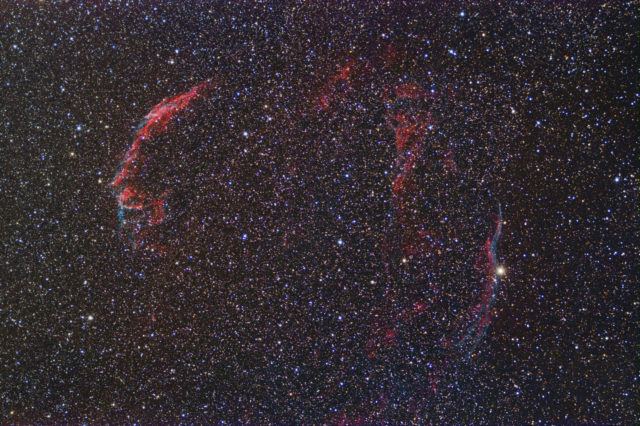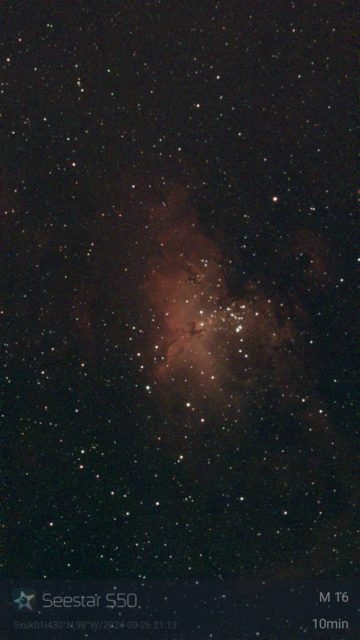
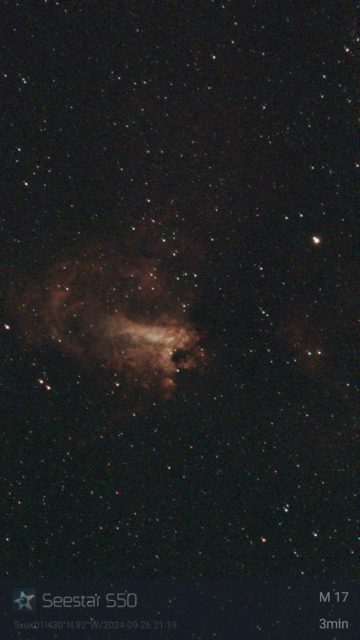
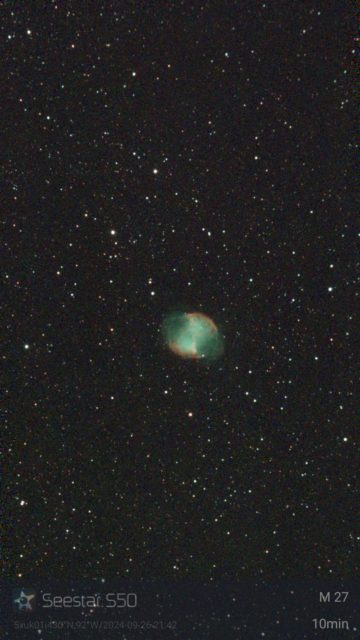
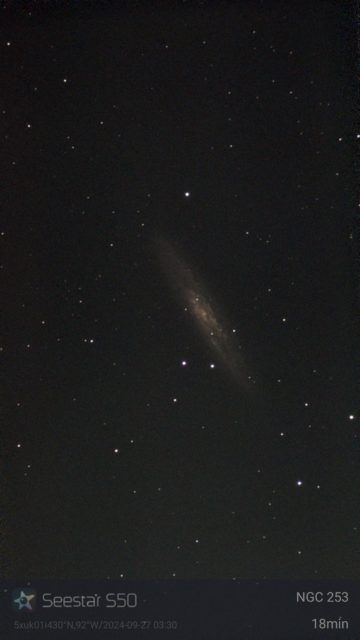
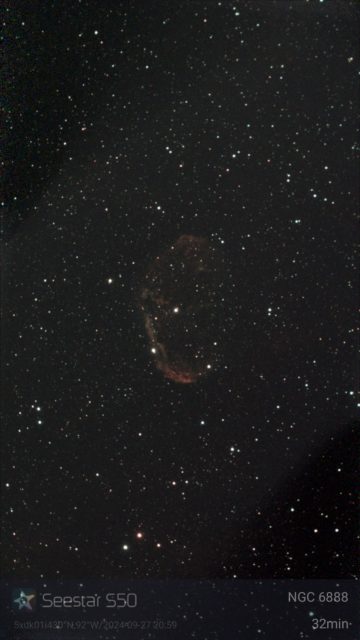
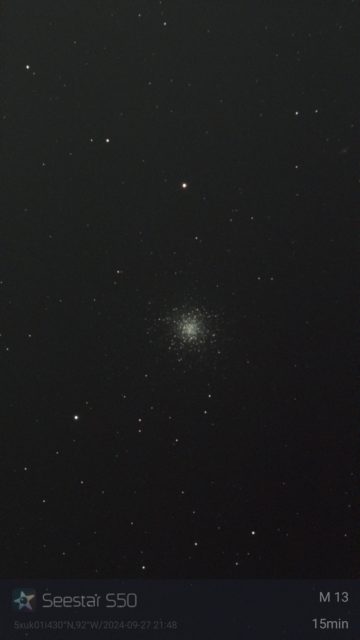
After waiting a while for the tech to mature, I decided that a Smart Telescope would be fun to play with. So, I got the cheapest one on the market.
ZWO built it originally and they spun off a new company called Seestar to market it. In this case, the unit is the Seestar S50, a 50mm triplet in an all-in-one design including mount, camera, computer and storage.
Here’s the first light images from it:
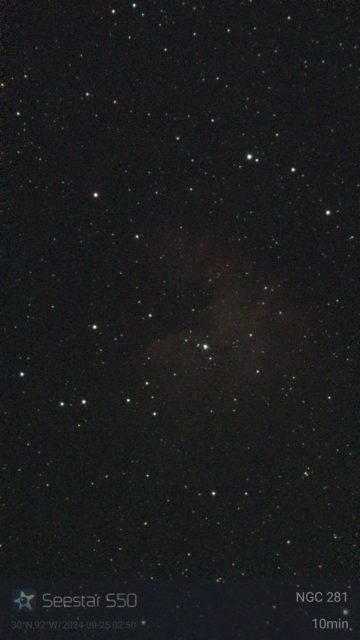
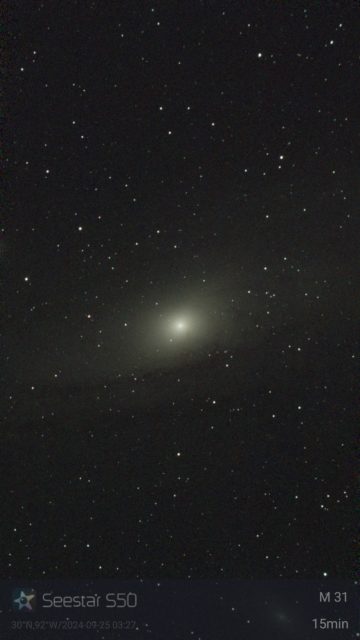
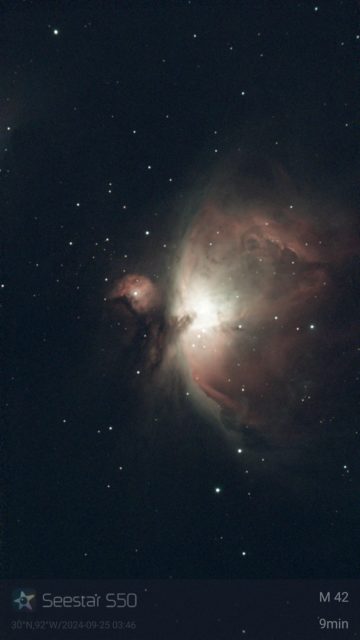
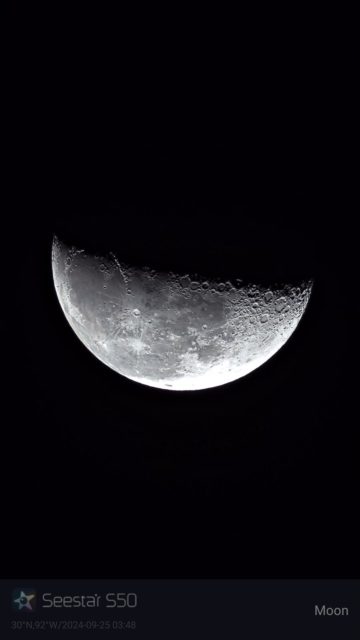
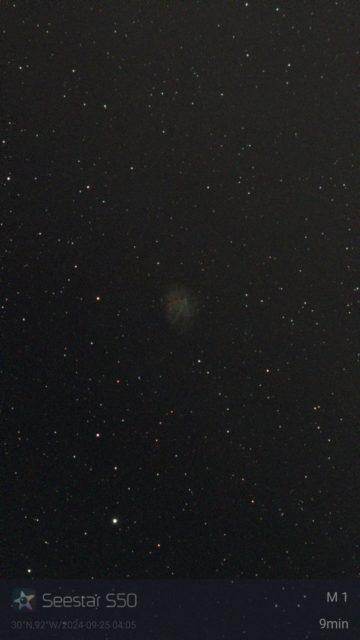
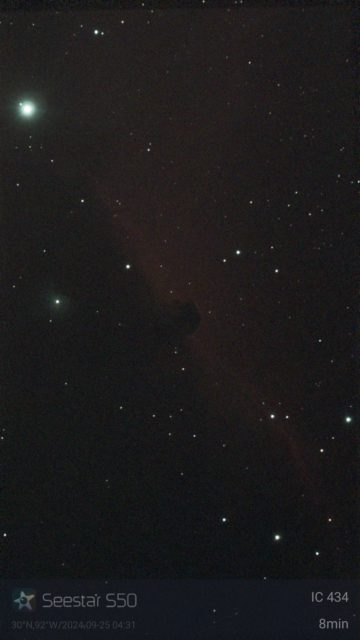

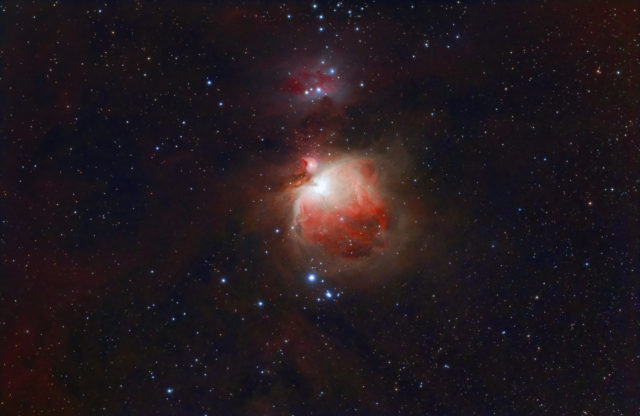
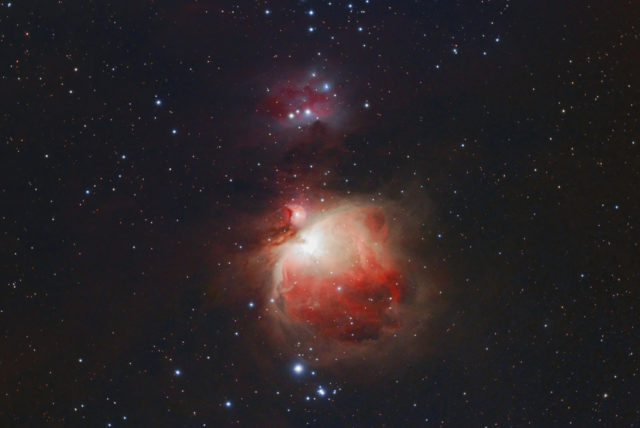
Here’s the very first stacked image taken with my new Astro-Tech AT60EDP. It’s a 60mm, F/5 Petzval telescope with 300mm focal length. This was 64×180 sec using the new scope. Location was a Bortle 8-9 zone with a bright moon out, 48F, clear and above average transparency. The second version is the full field.
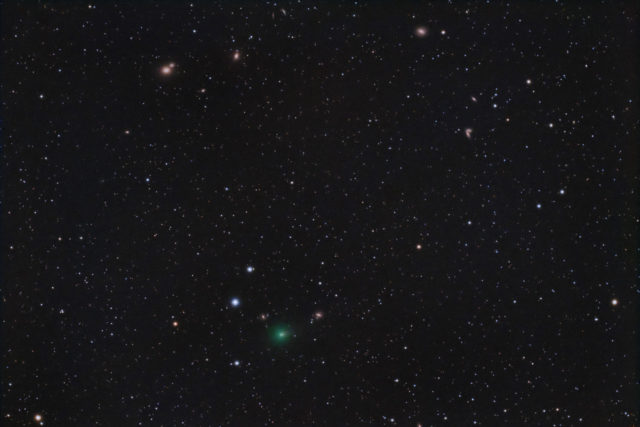
Comet 62P/Tsuchinschan near the galaxies NGC 4608, NGC 4596. Also included are M58, M59, M60 and other faint galaxy fuzzies in the Virgo Galaxy Cluster.
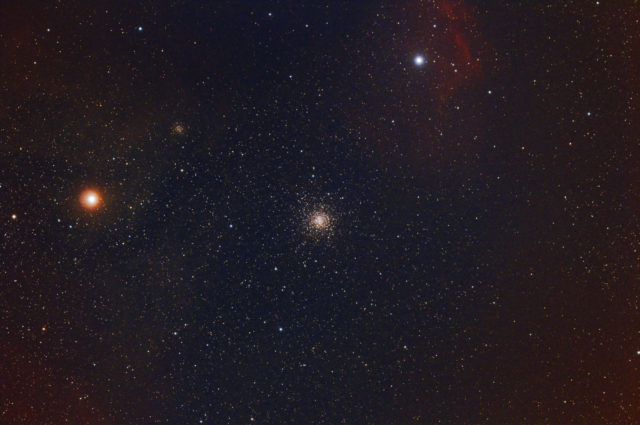
M4 Globular Cluster, Antares and friends in Scorpio. It was still the 1st light night for my new AT60EDP, but at 5:00 AM the next morning. This is 11 x 3 minutes with a QHY294C, Antlia Triband RGB Ultra filter from a Bortle 8-9 zone. Still noisy with only 33 minutes and there was some twilight, but I’m sure I’ll be able to add to it in time.
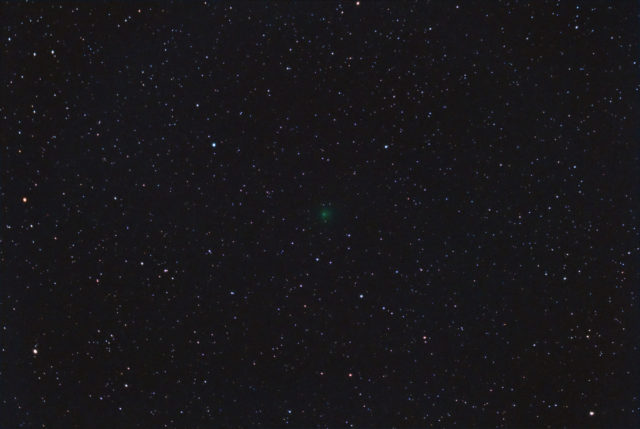
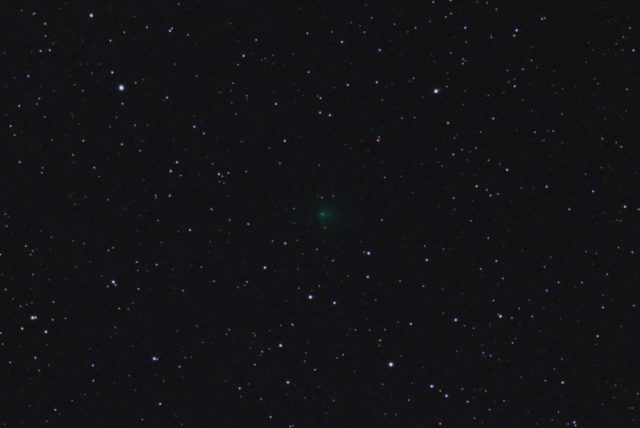
On this night, I was mainly going to try making adjustments to the new tilt plate gizmo for the AT60ED and see if I could get further improvements to its field. Even though it was clear at first, the forecast was clouds coming in for a few hours, so I was not looking to take any keeper images and I wanted to get this testing done instead.
I had just completed star aligning and noticed a comet near Aldebaran in Taurus on the charts, which I had just used to sync the scope’s alignment with. It wasn’t listed by SkyHound’s Comet Chasing website, so I took a few images to see what it looked like and how bright it was. Only 15 minutes of exposure, so it’s not much, but it is what started the night.
I was really after the Comet 62P in Leo, and this runt comet was interesting, but I wanted to do more testing of the tilt plate thingy. I was going to come back to it, but clouds invaded and stayed until 11:00 PM or so. By that time, I still had about 2 hours for the comet in Leo to get to a good spot, so I took images of M81 and M82 to kill time.
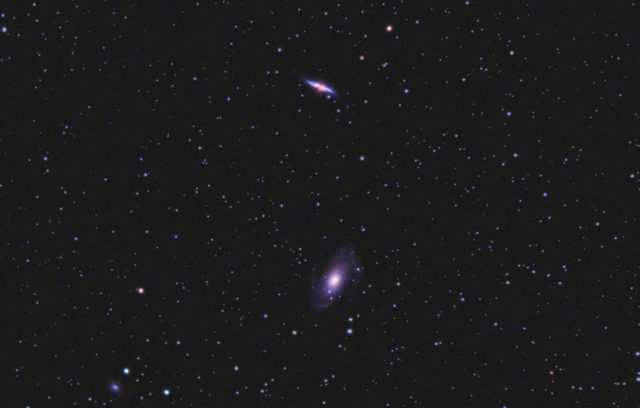
I lost/missed focus for this dataset and the guiding for it was terrible. Plus, it wasn’t quite as clear as it needed to be from lingering clouds and moisture. I salvaged what I could. I only include it here to remind me to focus before each object if I want a keeper image and remind me it takes 3 SharpCap polar alignments and not just 2 to get good tracking.
Finally, 62P Tsuchinshan is high enough to image, so I star taking images of it. I realized the first few subs were not in focus, so I stopped and redid it. But otherwise, I was able to let it take pictures on its own while I caught a few winks. All in all, 68 images of it were taken or 3.4 hours worth:
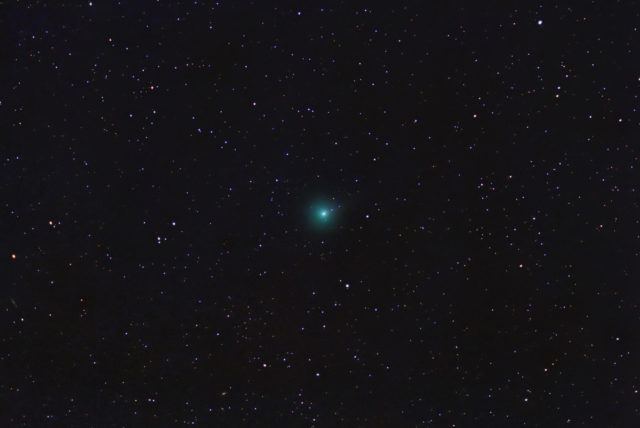
Transparency was only average to slightly above at times for this night, so it wasn’t as clear as predictions. But, I did notice what the focus was doing and I now have a better handle on it. Plus, now that I know about it, I might have to try for more sub-images on that first comet and see what shakes out.
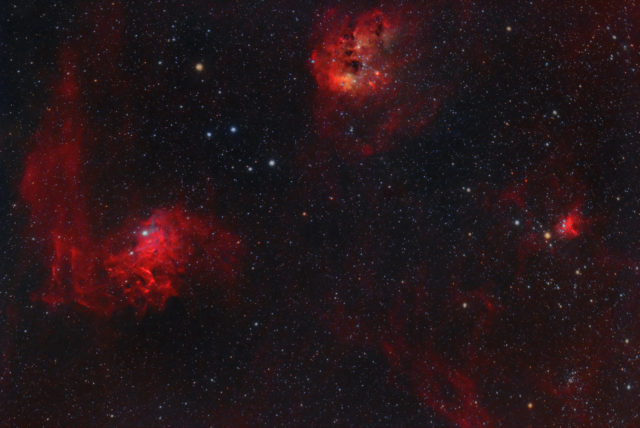
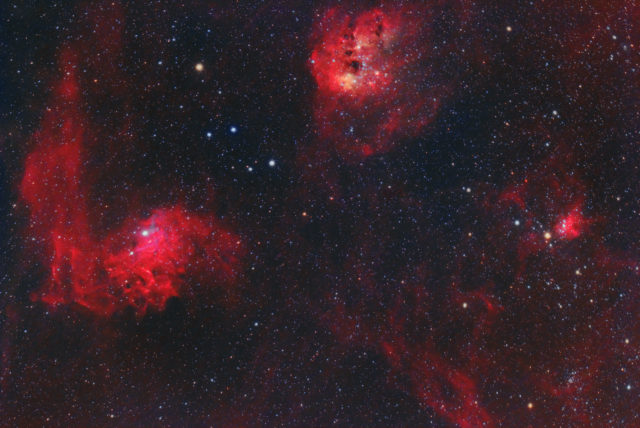
In the second week of 2024, the weather gave me a break on a Tuesday evening. It was going to be one really clear and totally transparent night and I could not let it pass without imaging something.
I was setup and was taking flats by dusk. But, the object I really wanted to get data on was not going to be in position until about 2:00 AM the following morning. So, I needed to kill time and this area of the sky in the image above (Auriga) was in prime position. I managed to get 3.75 hours before the mount reached the meridian and it was time to flip it.
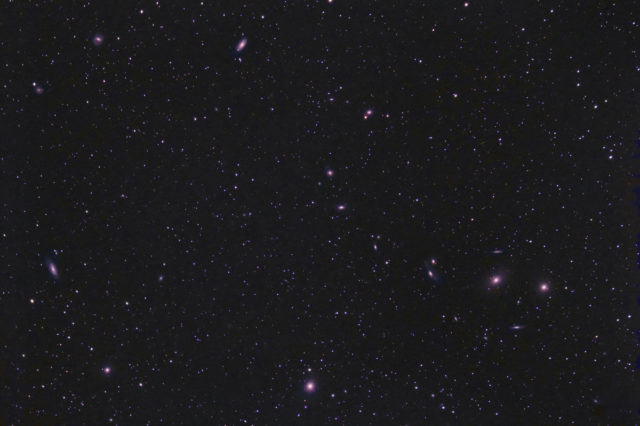
At this point, I had another 2 hours of waiting, so instead of flipping the mount, I went with imaging the Virgo Cluster with this very wide field rig. Not too bad for only two hours, but it needs about double what I had time for.
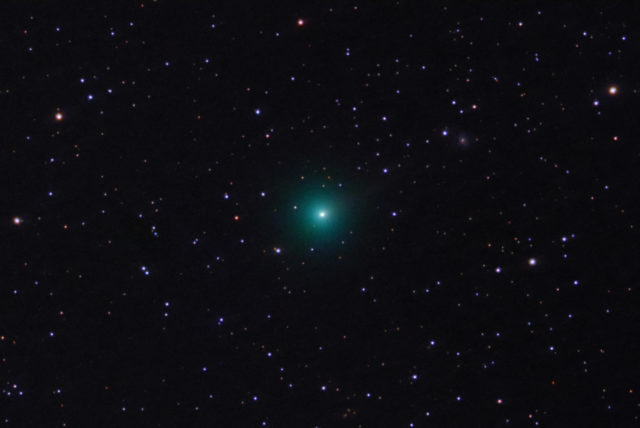
Finally, Leo and Comet 62/P, the object I was really after, was high enough to get data on, and I managed 45 sub-images of it. I have two versions. One is the cropped version above that I did first.
The full field version is below, which I restacked a couple of times to get a better background-stars-only image. One stack was done with SharpCap, and then I re-calibrated the subs in FitsWorks and stacked them again in IRIS, which was not as noisy as the Sharpcap stack. These two stacks were combined and then the comet-only images was composited in.
Not a very big comet, but it has a tail, at least. I don’t think it will get much better than this, unfortunately. It already passed perihelion in December and will make the closest approach to Earth before month’s end. It was forecast to slowly dim over the next few weeks.
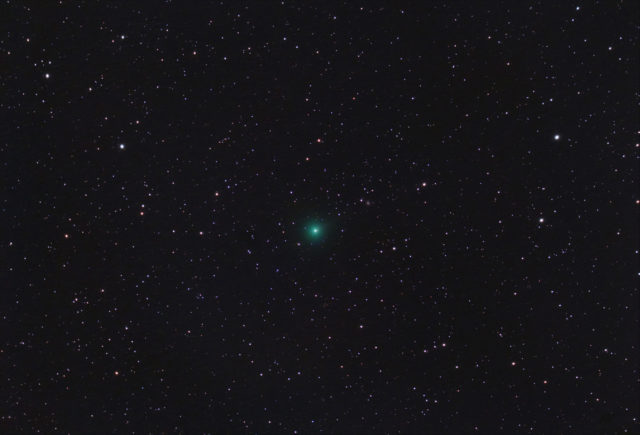
I stopped imaging the comet shortly before dawn. I had to work that day, so I grabbed my scope and laptop and brought them in and tried to sleep for an hour or so. I had napped during the night, but still lacked enough sleep to function. It took a couple of days to recover enough to do the processing for these. lol
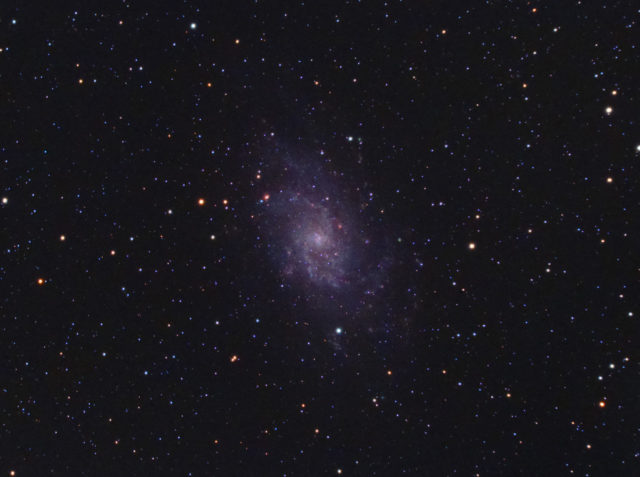
It was the last two nights of the year and I had clear weather. What luck!
So, on Friday night, Dec 30th, I had to take care of unfinished business with the Horse Head from the last session. I had something to block the parking lot lights from next door this time. While waiting for the Horse Head to get into position, I took images of M33 (above,) which I hadn’t tried with the AT60ED, yet. It came out decent, I guess.
While taking the Horse Head, I noticed on the charts that a comet was in the field. It was C/2017 K2 (PANSTARRS), at magnitude 11.9 according to Cartes du Ciel.
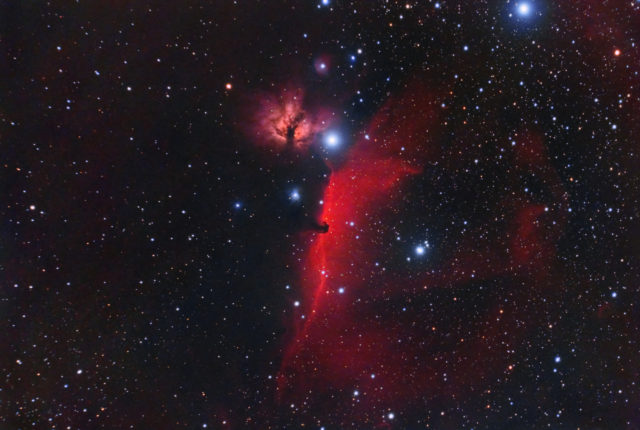
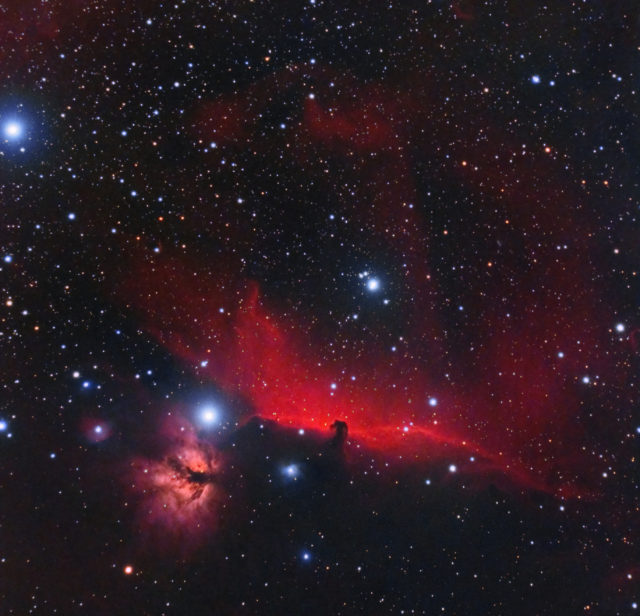
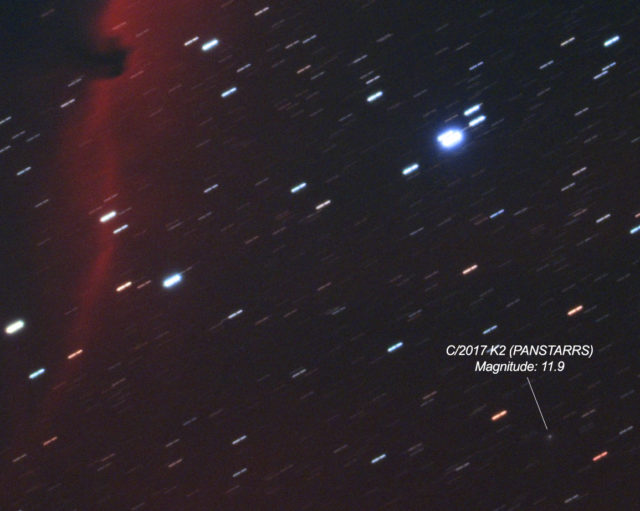
I imaged until almost midnight on Friday. I left the mount setup and brought in the rest with plans to try again on Saturday, New Year’s Eve.
On New Year’s Eve, my plans were to go for M78. While it was getting high enough, I got some more data on the Heart Nebula – an hour and six minutes. I mixed it with the salvaged Heart job from a couple of months back at about 22 percent to help fill in some noise.
When I got going on M78, it gave me problems with tracking. I finally realized it was my guide calibration and after redoing it, I was back in business, but wasted almost an hour figuring that out. Consequently, by the time the clouds came at about 10:20 PM, I still had less than 2 hours of data. Oh, well… I’ll try again next year! lol
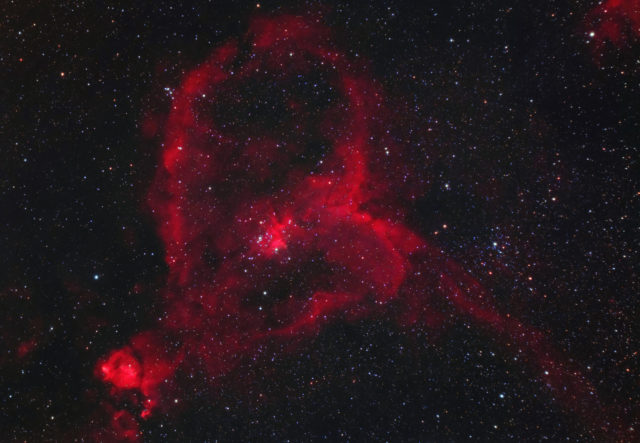
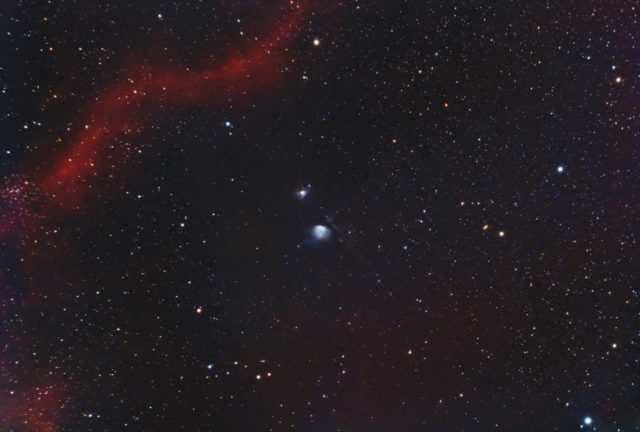
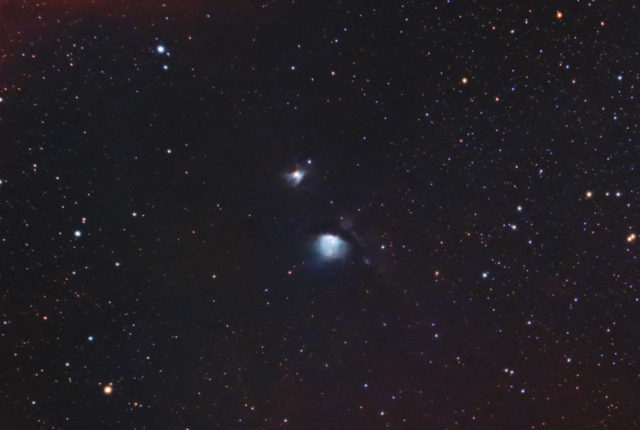
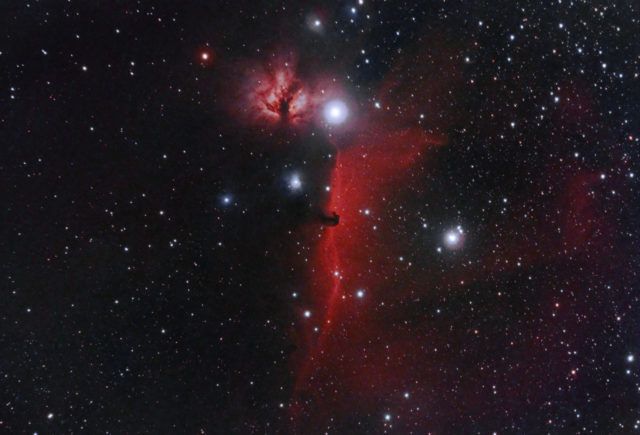
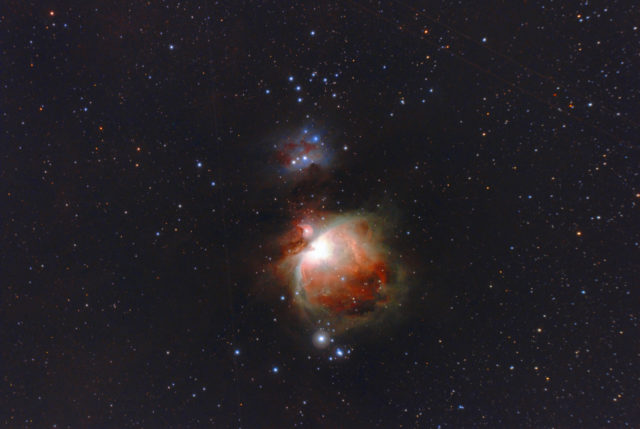
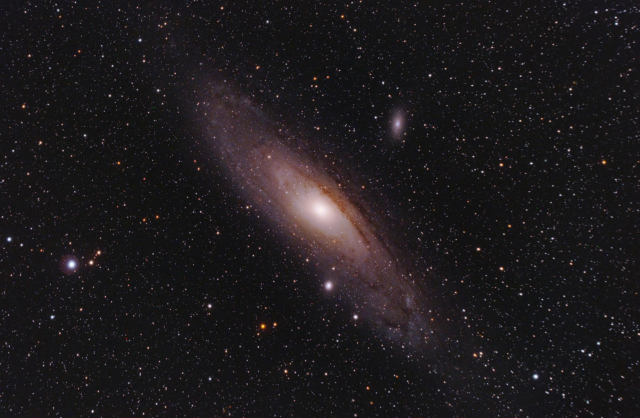
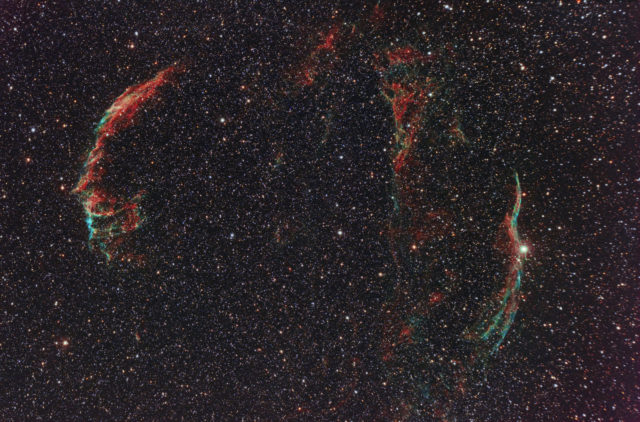
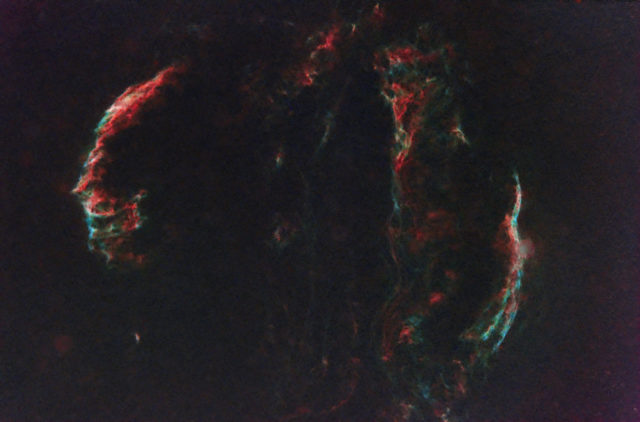
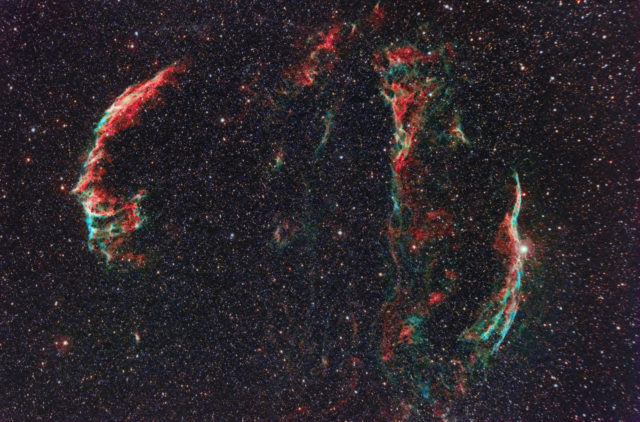
I had a new astro computer I built from scrap to test this night and also it was a test of the AT60ED and QHY294c with the ultra-mini guider and IMX224 camera on the new SkyWatcher GTi mount. The above equipment was 7.5 lbs, well within the 11 lb limit of the GTi mount and I had great guiding for the most part.
I bagged the four objects above on this night. A Baader UHC-S L-Booster filter was used to block the horrendous LP, which worked pretty well with the QHY294c.
The three versions of the Veil Complex were, for frame 1, essentially the 60 frames stacked and processed normally. Then, that result was put through Starnet++, which removes all the stars and leaves just the nebula, which is frame 2. I boosted that to bring out more nebula and then recombined it with the original to obtain an enhanced version in frame 3.
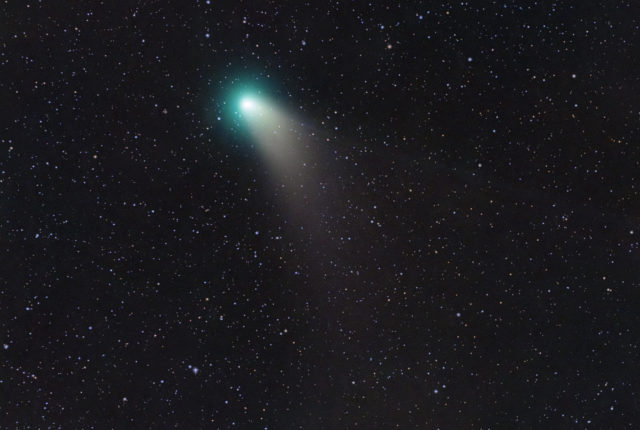
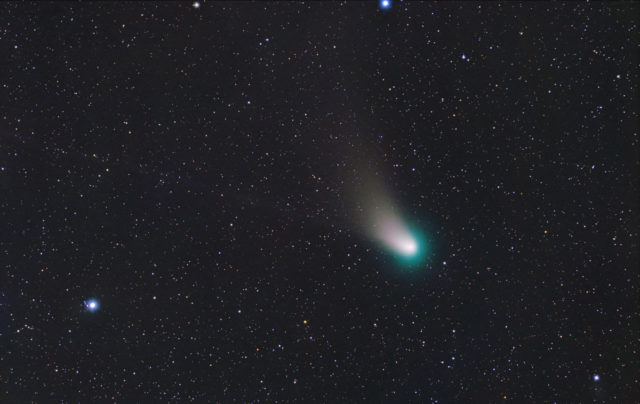
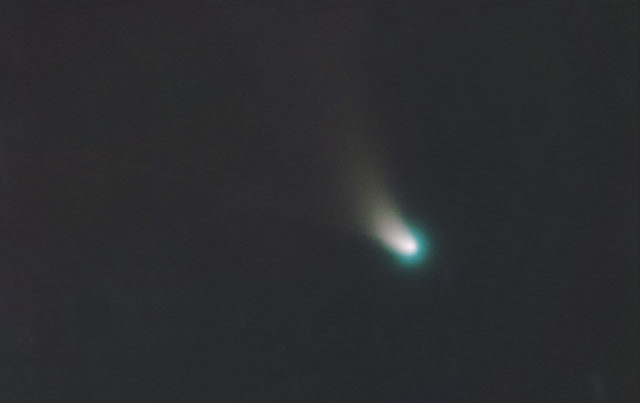
Another comet image to add to my collection. This is perhaps the last image from me of C/2022 E3 ZTF for perhaps the next 2 weeks. Weather forecast is nothing but clouds next 10 days or more. By that time, the moon will getting full and the comet is rapidly shrinking in size and fading in brightness. It will still be around, just not as photogenic as it is now.
Also on this night, I tried out a new filter – the Antlia Triband RGB Ultra Filter. Boy, that’s a weird one, let me tell you. Blue as blue can get. lol. But, a stack from SharpCap color balances out in IRIS when setting the blackpoint, so I don’t know? SharpCap refuses to color balance it and leaves it too blue, however. lol So, I just stack and then process first in IRIS for initial color.
This object(s) below was the second or third test subject. Perfect, since this is in strong LP on the north to northwest side. If it can block that, great! And it seems to have blocked it:
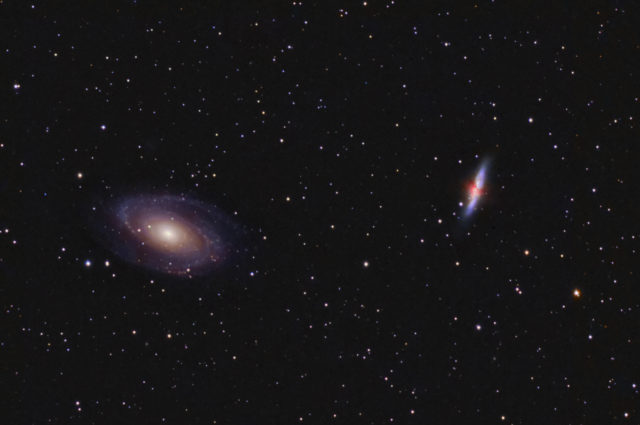
Yes, it has funky colors, but they’re mostly there, instead of that dull pasty look from duo-band filters. I don’t know? I’ll have to do more testing.
Thor’s Helmet was the first object I used it on. I shot it with a UV/IR then with the Antlia Triband with roughly the same framing. This is just the subs-images using the Antlia. It is about 33 minutes of combined exposure:
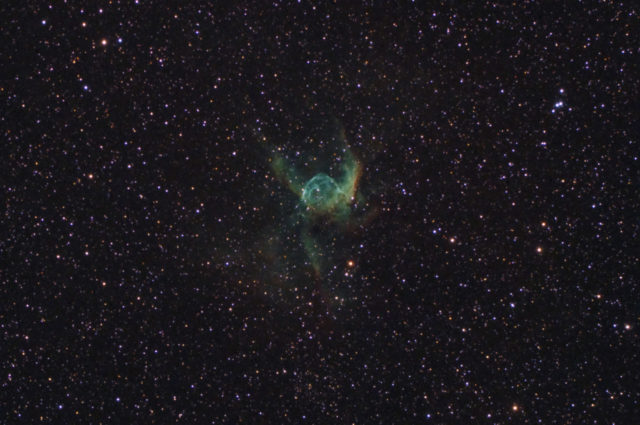
Finally, after experimenting with Thor’s Helmet, I went to one of the tougher targets – the Virgo Cluster. Its always either not enough exposure or the wrong colors with duo-band and UHC filters for this cluster. But, does this filter have the blue and enough other colors to give it what it needs? Well, here it is:
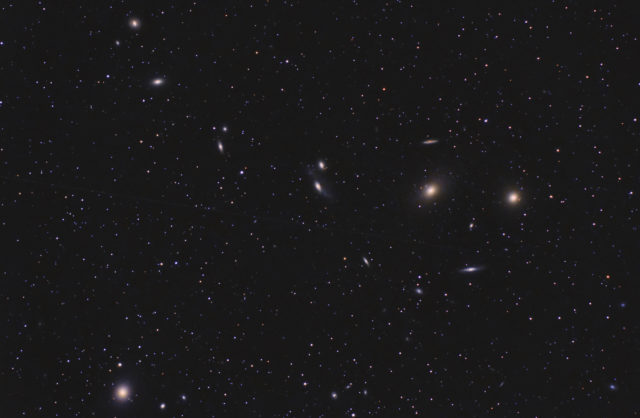
With a very nice comet in the sky, I decided it was time to break down and get the camera I’ve wanted since the advent of the CMOS cooled-camera revolution. It’s the QHY294C-Pro, an 11MP camera with low noise, 14bit output and a larger chip than the QHY183c.
I immediately noticed how much less noise it has than the old CMOS camera and how sensitive it is. I should have got this one in the beginning.
A quick test was done on the Orion Nebula region for 30 minutes of exposure. It came out better than some of my hours long attempts with the old camera or my DSLR. Plus, the nearly full moon was out and produced a very harsh gradient and strong vignetting. The flat I used was for a different orientation of the camera, so it did not fully remove the vignetting, but it got all the dust motes that were on my UV/IR filter and sensor cover. (I should have blew off the dust on both before starting out, I guess. lol)
I cropped the image above down a bit. Here’s another version with different color balance and it is the full field, uncropped original:
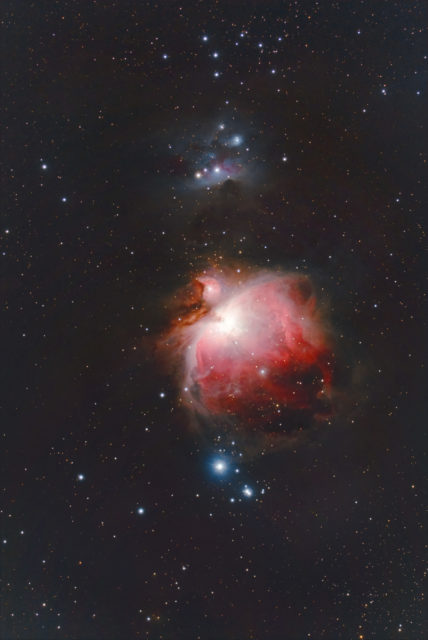
BTW, no dark calibration in the above image. It was a straight raw stack. I covered the scope after the above test and shot darks in prep for what I was really after.
This was my main target, Comet C/2023 E3 ZTF. It was highest in the sky at 8:30 PM local time and I started imaging it right before that. I spent several hours on it, but this image is just the first 1.5 hours of that time.
BTW, my friends at Televue Optics, Inc., liked the above comet image enough to use it on their blog. The post is about comet imagers using Televue equipment for their shots. It is linked here: Televue Optics Blog – Comet C/2022 E3 (ZTF) Imagers
Here’s another version with a less red background color from the moon’s interference:
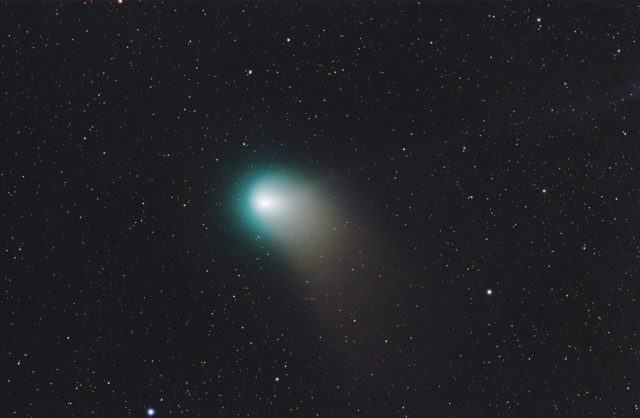
A nearly full moon was out and in the same quadrant of the sky as the comet. Moonlight this bright is tough to deal with and creates some very harsh gradients. Luckily I took some flats the next morning and was able to use them to help minimize that issue.
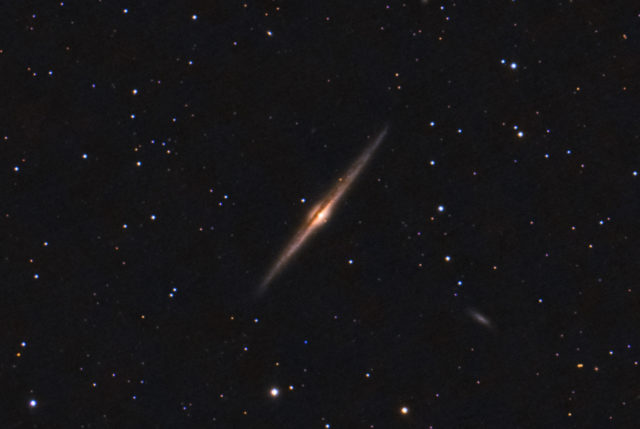
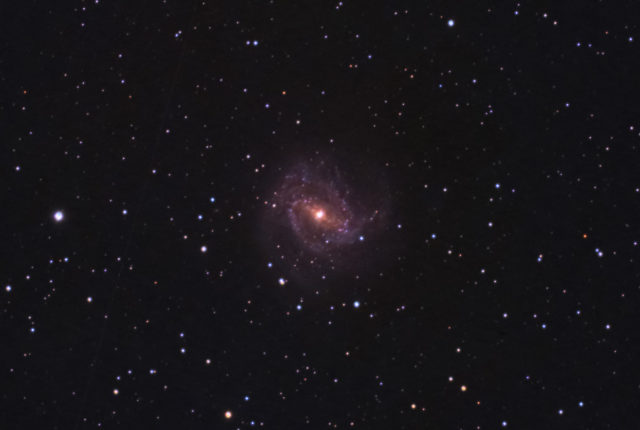
Last but not least, were two galaxies I imaged to test the resolution and sensitivity of the new camera. The image scale lacks for galaxies, but the color and low noise were outstanding.
Remember, all of these were taken on a bright moonlit night a day or so before full moon. I would say the first light test was a major success!
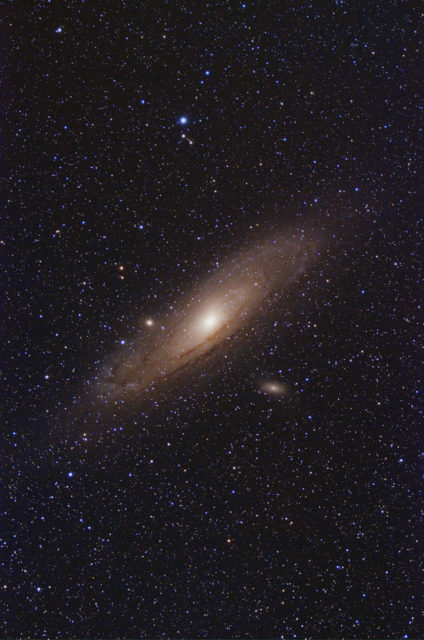
Only 30 minutes of exposure for this test image of the Andromeda Galaxy (M31) with a TPO 180mm F/4.5 Ultrawide Astrophotography Lens. Askar is the OEM and the lens is a small APO triplet with 40mm objective that has 2 elements of FPL-53 glass and includes a triplet reducer/flattener, making it a sextuplet full-frame astrograph. The spot diagram for this lens shows that it doesn’t quite produce perfectly round star images, however, even at the center. But, some of that is correctable during post-processing and the lens produces a pretty flat image regardless.
I also did 70×3 min subs for the Veil Complex that I took before the M31 set. That turned out like this:
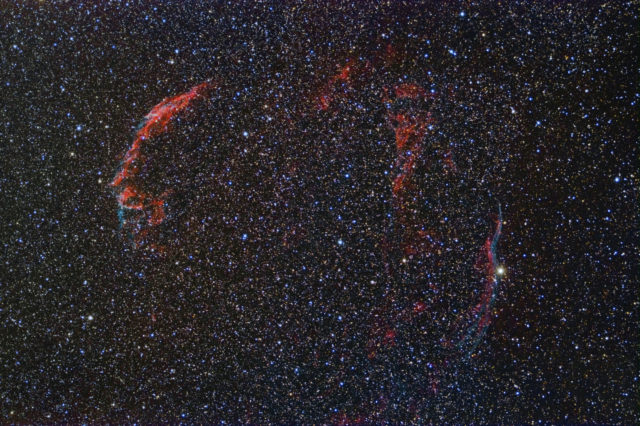
Here is a lighter version:
